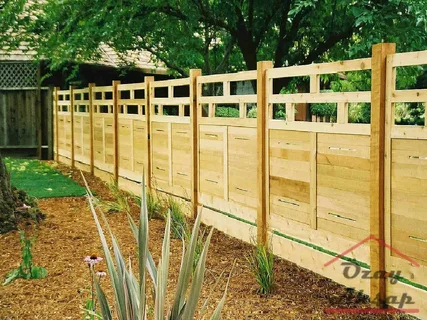Installing a garden fence is a rewarding project that enhances both the security and aesthetic appeal of your outdoor space. Whether you’re a seasoned DIY enthusiast or tackling this project for the first time, following a structured approach ensures a secure and successful installation.
- Plan and Prepare
Before you begin installing your garden fence, thorough planning is essential. Measure the perimeter where the fence will be installed and mark out the boundary clearly. Check local regulations and obtain any necessary permits or permissions.
- Choose the Right Materials
Selecting appropriate materials is crucial for a secure and durable garden fence. Common options include wood, vinyl, metal, and composite materials. Consider factors such as durability, maintenance requirements, and how well the material complements your home and garden aesthetics.
- Prepare the Ground
Prepare the ground by clearing vegetation and debris along the fence line. Use a string line and stakes to outline the fence’s path, ensuring it follows the planned boundary accurately. This step is crucial for achieving a straight and even installation.
- Install Fence Posts
Fence posts provide the foundation for your garden fence and must be installed securely. Dig post holes using a post hole digger to the recommended depth, which typically varies based on the fence height and local soil conditions. Place posts at regular intervals along the fence line, ensuring they are plumb and level.
- Attach Fence Panels or Boards
Once the posts are in place and secure, it’s time to attach the fence panels or boards. Depending on your chosen material, this may involve screwing or nailing panels to the posts, ensuring they are evenly spaced and level. Use a spirit level to check alignment periodically.
- Secure and Finish
After attaching the fence panels, secure them further by adding screws or nails as needed. For added security and durability, consider reinforcing the posts with concrete or gravel around the base. Finish by adding any decorative elements or treatments to enhance the fence’s appearance and longevity.
- Regular Maintenance
Maintaining your garden fence is essential to ensure it remains secure and attractive over time. Regularly inspect for signs of damage or wear, especially after severe weather. Treat or repaint wooden fences as needed to protect against rot and weathering.
Conclusion
Installing a secure garden fence involves careful planning, preparation, and execution to achieve both practical functionality and aesthetic appeal. By following these steps and choosing the right materials for your specific needs, you can create a boundary that enhances the beauty and security of your outdoor space. Whether you’re installing a classic wooden fence, modern metal panels, or another style that suits your home, proper installation ensures years of enjoyment and peace of mind.


